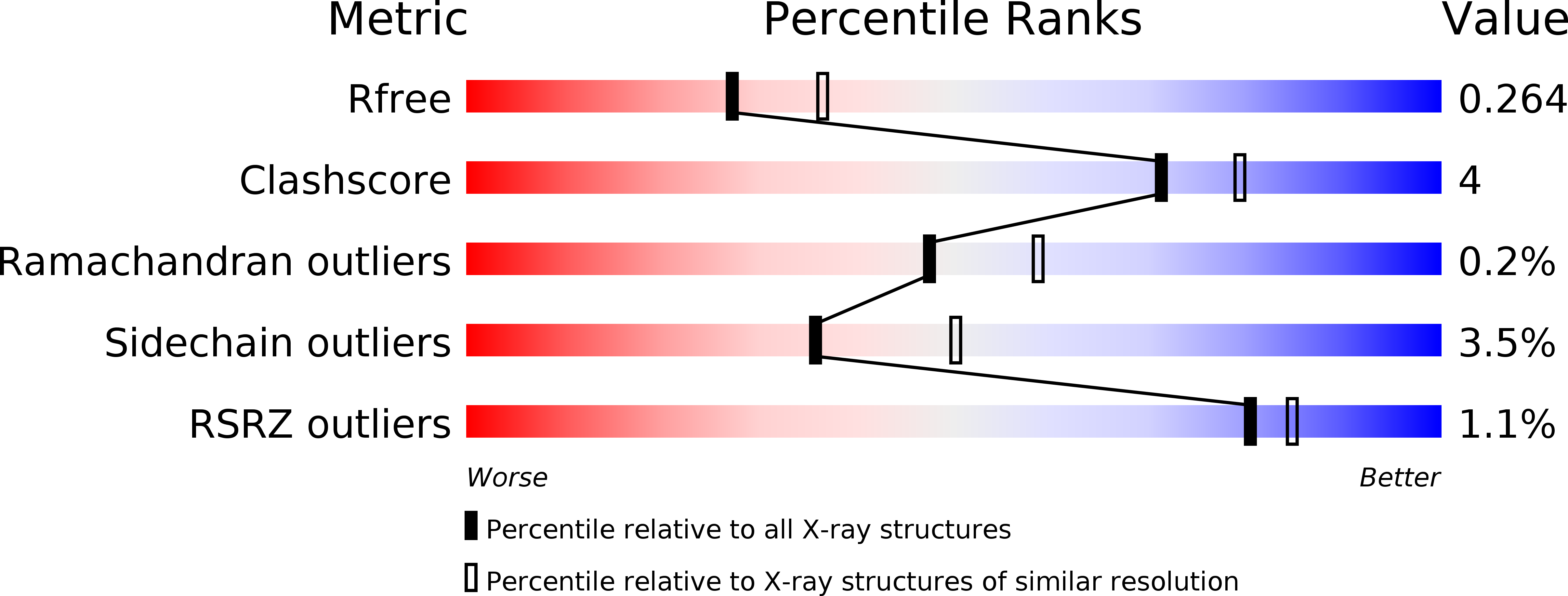Structural model of the dimeric Parkinson's protein LRRK2 reveals a compact architecture involving distant interdomain contacts.
Guaitoli, G., Raimondi, F., Gilsbach, B.K., Gomez-Llorente, Y., Deyaert, E., Renzi, F., Li, X., Schaffner, A., Jagtap, P.K., Boldt, K., von Zweydorf, F., Gotthardt, K., Lorimer, D.D., Yue, Z., Burgin, A., Janjic, N., Sattler, M., Versees, W., Ueffing, M., Ubarretxena-Belandia, I., Kortholt, A., Gloeckner, C.J.(2016) Proc Natl Acad Sci U S A 113: E4357-E4366
- PubMed: 27357661
- DOI: https://doi.org/10.1073/pnas.1523708113
- Primary Citation of Related Structures:
5IL7 - PubMed Abstract:
Leucine-rich repeat kinase 2 (LRRK2) is a large, multidomain protein containing two catalytic domains: a Ras of complex proteins (Roc) G-domain and a kinase domain. Mutations associated with familial and sporadic Parkinson's disease (PD) have been identified in both catalytic domains, as well as in several of its multiple putative regulatory domains. Several of these mutations have been linked to increased kinase activity. Despite the role of LRRK2 in the pathogenesis of PD, little is known about its overall architecture and how PD-linked mutations alter its function and enzymatic activities. Here, we have modeled the 3D structure of dimeric, full-length LRRK2 by combining domain-based homology models with multiple experimental constraints provided by chemical cross-linking combined with mass spectrometry, negative-stain EM, and small-angle X-ray scattering. Our model reveals dimeric LRRK2 has a compact overall architecture with a tight, multidomain organization. Close contacts between the N-terminal ankyrin and C-terminal WD40 domains, and their proximity-together with the LRR domain-to the kinase domain suggest an intramolecular mechanism for LRRK2 kinase activity regulation. Overall, our studies provide, to our knowledge, the first structural framework for understanding the role of the different domains of full-length LRRK2 in the pathogenesis of PD.
Organizational Affiliation:
German Center for Neurodegenerative Diseases, 72076 Tübingen, Germany; Center for Ophthalmology, Institute for Ophthalmic Research, Eberhard Karls University, 72076 Tübingen, Germany;














